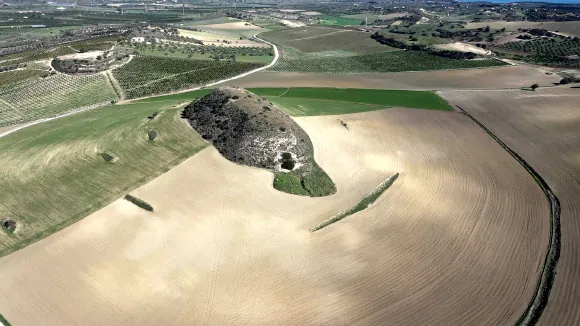
Stunning Discovery! How a Cataclysmic Megaflood Transformed the Mediterranean Sea 5.3 Million Years Ago!
2025-01-21
Author: Mei
Introduction
A groundbreaking study reveals that a colossal flood known as the Zanclean megaflood played a pivotal role in ending the Messinian salinity crisis, a significant geological event that took place between 5.97 and 5.33 million years ago. This research, spearheaded by the Monterey Bay Aquarium Research Institute (MBARI), is reshaping our understanding of Earth’s ancient climates.
The Zanclean Megaflood
Dr. Aaron Micallef, the lead author of the study, describes the Zanclean megaflood as "an awe-inspiring natural phenomenon." He states that its discharge rates and flow velocities were unparalleled in the history of our planet. "Our research provides the most compelling evidence yet of this extraordinary event," he adds, emphasizing its monumental impact.
Effects of the Messinian Salinity Crisis
During the Messinian salinity crisis, the Mediterranean Sea became cut off from the Atlantic Ocean, resulting in drastic evaporation that left behind immense salt deposits and altered the region's landscape forever. For many years, scientists believed that the Mediterranean Sea refilled gradually over 10,000 years following this dry spell. However, this theory faced scrutiny after a significant erosion channel was discovered in 2009, stretching from the Gulf of Cadiz to the Alboran Sea, hinting at the possibility of a single, catastrophic flooding event. Known as the Zanclean megaflood, it is estimated to have occurred over a period of just two to 16 years.
Magnitude of the Megaflood
The study estimates that the megaflood had astonishing discharge rates ranging from 68 to 100 Sverdrups (Sv), with one Sverdrup equivalent to one million cubic meters per second—an unfathomable volume of water. To investigate this phenomenon, Dr. Micallef and his team meticulously analyzed geological formations alongside recent geophysical data and numerical modeling, creating a detailed representation of the megaflood's dynamics.
Geological Evidence
Through their research, they identified over 300 streamlined ridges in the region surrounding the Sicily Sill, a submerged landmass that once divided the western and eastern Mediterranean basins. Professor Paul Carling from the University of Southampton notes, "The morphology of these ridges is compatible with erosion caused by large-scale, turbulent water flows, demonstrating the megaflood's immense power."
Sampling and Findings
Sampling these ridges revealed that they were capped with layers of rocky debris—evidence of rapid deposition driven by immense force. This debris was found precisely at the transition between the Messinian and Zanclean periods, underlining the timing of the megaflood event.
Seismic Reflection Data and Channel Discovery
The researchers employed seismic reflection data to visualize geological layers hidden beneath the seabed. They discovered a 'W-shaped channel' on the continental shelf, positioned east of the Sicily Sill. This natural channel functioned as a funnel, directing the overwhelming waters of the megaflood towards the Noto Canyon, a prominent underwater valley in the eastern Mediterranean.
Modeling the Flood
Using advanced computer modeling, the team simulates the flood's trajectory, revealing that as it progressed, the floodwaters changed direction and increased in intensity, peaking at speeds of 32 meters per second (over 72 mph). This resulted in deeper channels and greater erosion, allowing sediment to be transported across vast distances—an event that offered invaluable insights into Earth's geological history.
Conclusion
Dr. Micallef concludes by stating that these findings not only illuminate a crucial chapter in our planet's past but also highlight the resilience of geological formations preserved over millions of years. He invites further exploration into the Mediterranean margins, suggesting that more secrets lie hidden beneath the waves.
Publication and Future Research
This compelling study has been published in the journal *Communications Earth & Environment*, paving the way for future research efforts aimed at unraveling the mysteries of our planet's dynamic history.


 Brasil (PT)
Brasil (PT)
 Canada (EN)
Canada (EN)
 Chile (ES)
Chile (ES)
 Česko (CS)
Česko (CS)
 대한민국 (KO)
대한민국 (KO)
 España (ES)
España (ES)
 France (FR)
France (FR)
 Hong Kong (EN)
Hong Kong (EN)
 Italia (IT)
Italia (IT)
 日本 (JA)
日本 (JA)
 Magyarország (HU)
Magyarország (HU)
 Norge (NO)
Norge (NO)
 Polska (PL)
Polska (PL)
 Schweiz (DE)
Schweiz (DE)
 Singapore (EN)
Singapore (EN)
 Sverige (SV)
Sverige (SV)
 Suomi (FI)
Suomi (FI)
 Türkiye (TR)
Türkiye (TR)
 الإمارات العربية المتحدة (AR)
الإمارات العربية المتحدة (AR)